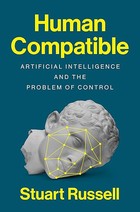The AI agent landscape is experiencing a fascinating paradox. While frameworks proliferate and complexity increases, the most successful implementations are surprisingly simple. After analyzing real-world deployments across industries, a clear pattern emerges: simplicity wins.
Defining the Agent Spectrum
The term "AI agent" has become frustratingly overloaded. Teams use it to describe everything from simple chatbots to fully autonomous systems. The key distinction lies between two architectural approaches:
- Workflows: Predictable, structured systems that follow predefined paths
- Agents: Dynamic systems where LLMs control their own processes and tool usage
The Framework Trap
While frameworks like LangChain and LangGraph promise easier implementation, they often introduce unnecessary complexity. The abstraction layers can obscure the underlying prompts and responses, making debugging a nightmare. More critically, they can tempt developers to add complexity when a simple solution would suffice.
Real-world experience suggests starting with direct LLM API calls. Many patterns can be implemented in just a few lines of code. If you do use a framework, ensure you understand what's happening under the hood.
The Concurrency Challenge
As agent systems scale, new challenges emerge. Task queuing, race conditions, and orchestration become critical considerations. The question isn't just about building individual agents—it's about managing their interactions and ensuring system reliability.
The orchestrator pattern often appears as a solution, but this raises deeper questions about system architecture and resource management. Who controls the orchestrator? How do we handle failures? These aren't just technical questions—they're fundamental design decisions that affect system autonomy and scalability.
The Economic Reality
Beyond technical considerations lies an uncomfortable truth: the economics of agent systems remain unclear. Current costs focus on API calls and compute, but truly autonomous agents will require continuous resources. This "existence tax" could fundamentally change how we think about agent deployment and ownership.
The alternative—permissionless execution layers where agents manage their own resources—represents a radical departure from current platform-dependent models.
Production Lessons
Teams deploying agents in production report mixed experiences with frameworks. While they accelerate initial development, many find themselves rebuilding from scratch as requirements evolve. The agent space moves too quickly for stable frameworks to emerge, and this rapid evolution may prevent any single framework from achieving dominance.
The Complexity Gradient
The most effective approach follows a complexity gradient:
- Start simple: Single LLM calls with retrieval and examples
- Add structure: Workflows for predictable tasks
- Embrace autonomy: Agents for complex, dynamic scenarios
Looking Forward
The agent development landscape shows signs of maturation challenges. Some observers note that even advanced models like Gemini appear to be regressing in agent capabilities. This suggests we may be hitting fundamental limitations in current approaches.
The bottleneck isn't necessarily in the models themselves, but in our understanding of how to architect systems that balance autonomy with reliability, complexity with maintainability, and capability with cost.
Conclusion
Building effective AI agents requires resisting the allure of complexity. The most successful implementations start simple and add complexity only when justified by clear benefits. As the field evolves, the winners won't be those with the most sophisticated frameworks, but those who master the art of appropriate complexity—knowing when to add it, and more importantly, when to resist it.
The future of AI agents lies not in universal frameworks or maximum autonomy, but in thoughtful design that matches system complexity to actual requirements. In a field moving at breakneck speed, sometimes the best strategy is to slow down and build something that actually works.













